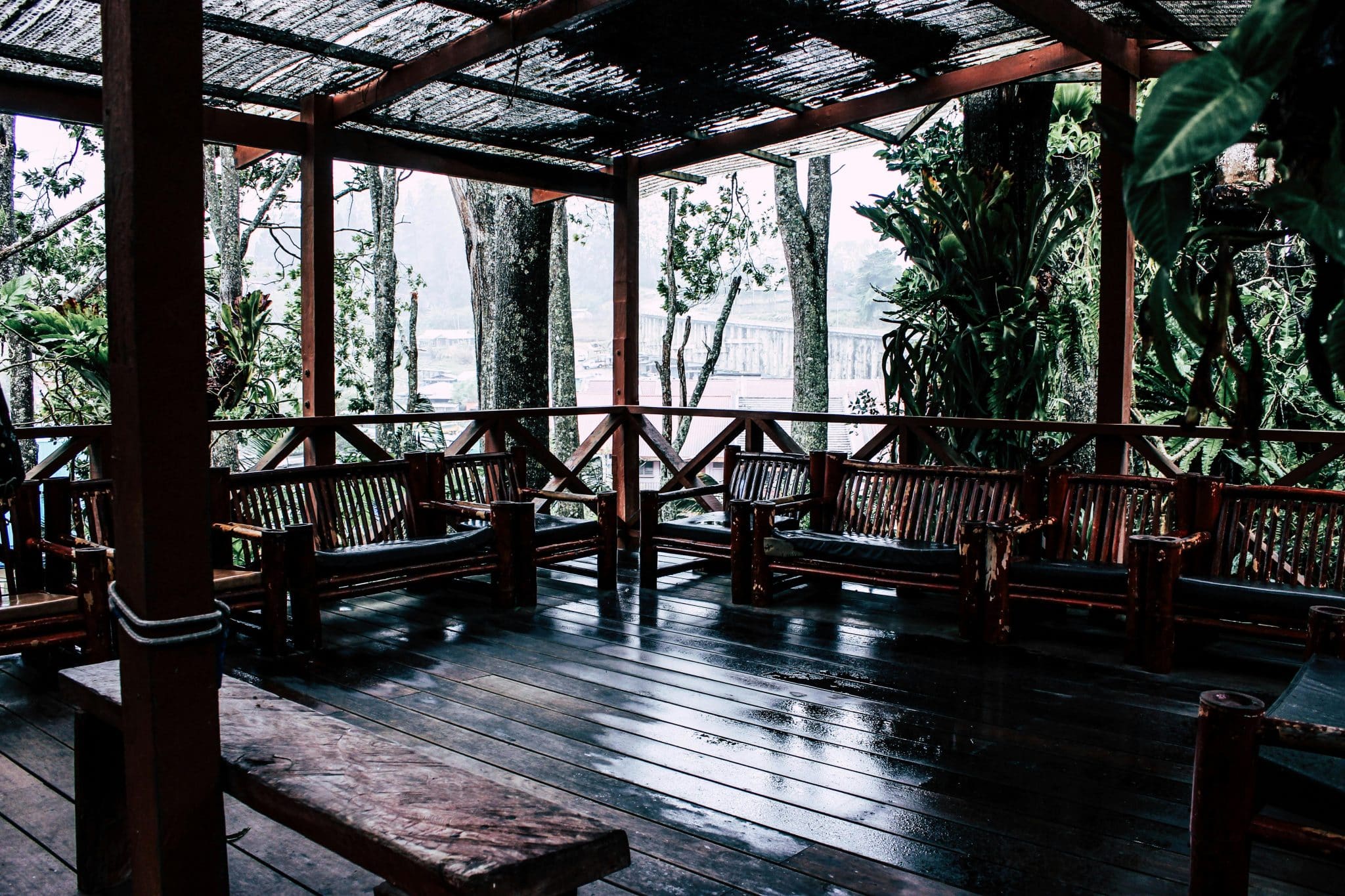I’ve always been curious about turning ordinary things into useful spaces. Today, I want to talk about shipping container bunkers.
These steel boxes offer more than meets the eye. They can be made into safe spots for storage, shelter during storms, or even small living areas.
When set up right, these containers stand strong against wind, rain, and time. They cost less than building from scratch and need less work to finish.
I’ll cover everything you need to know about getting one, setting it up, and making it work for you. Let’s see what makes these simple boxes so special.
Why Choose a Shipping Container for a Bunker?
Shipping containers offer many benefits when creating a bunker or safe space. They start with built-in strength and can be changed to meet your needs. Their design makes them ideal for both short-term and long-term protection.
- Ready-made structure with strong walls, floors, and roofs
- Water-resistant steel shell that keeps out pests
- Easy to hide underground or blend into surroundings
- Long lifespan with proper maintenance
- Available in standard sizes for easier planning
Step-by-Step Process to Build a Bunker
In this, you will discover the essential steps to transform a shipping container into a functional underground bunker.
Tools and Materials for Building a Container Bunker
| Category | Item | Purpose / Notes |
|---|---|---|
| Structural Steel | Steel I-Beams, Exoskeleton, Horizontal Channels | Reinforce the container structure to handle pressure and weight when buried. |
| Waterproofing | Concrete Mix, Waterproof Sealant, Sump Pump | Prevent water seepage and flooding; ensure a dry, secure environment |
| Cutting & Welding | Laser Cutter, MIG/TIG Welder, Plasma Cutter | Cut and shape steel components; weld for strong, secure joints |
| Assembly & Fastening | Bolt Kits, Steel Rivets, Clamps | Secure components during assembly, ensuring precision and stability |
| Entry & Access | Steel Staircase, Ladder, and Concealed Hatch | Provide safe, easy access to the shelter; hidden hatch for privacy |
| Ventilation & Airflow | Air Filtration System, Intake/Outflow Pipes | Ensure proper ventilation in a sealed environment |
| Security & Protection | Blast Door, Locking Mechanism | Reinforced entry for safety, preventing unauthorized access |
| Interior Setup | Lighting, Insulation Panels, Furniture | Set up for comfort, storage, and temperature control inside the bunker |
Step 1: Understand the Purpose of the Bunker
Before starting any construction project, it is essential to define the purpose of an underground shelter. Container bunkers can serve various functions, including:
- Emergency shelter during natural disasters
- Long-term survival space
- Secure storage for valuables,
- Temperature-controlled storage
- Recreational space
The intended purpose will guide decisions about size, design features, and necessary systems throughout the project. A recreational space might prioritize comfort and aesthetics, while an emergency shelter would focus on durability and essential life-support systems.
Different purposes require different approaches to construction, ventilation, and interior design. A storage bunker may need less sophisticated air exchange systems than a habitable shelter designed for extended occupancy.
Step 2: Choose the Right Container or Structure
Standard shipping containers weren’t designed for underground use, so careful selection is crucial. High cube containers offer more headroom (9’6″ vs standard 8’6″), while the condition of the container (new, one-trip, or used) affects both cost and required preparation.
Due to their specialized design features, purpose-built shelters may be more suitable than modified shipping containers for serious underground applications.
The structural limitations of standard containers become apparent when subjected to the lateral pressure of the surrounding earth.
Container selection should balance budget constraints with structural requirements. While saving money upfront might be tempting, compromising on the base structure often leads to costly repairs or complete failure later.
- Look for containers with minimal rust and good structural integrity
- Consider container size based on intended occupancy and use
- Evaluate the cost-benefit of new versus used containers
Step 3: Plan the Structural Reinforcement
Underground pressure can crush standard containers without proper reinforcement. A comprehensive reinforcement plan includes steel I-beams across the ceiling and floor, vertical supports connecting top and bottom beams, and horizontal bracing for side walls.
The depth of burial determines the level of reinforcement needed—deeper installations require more extensive structural support to withstand the pressure of the surrounding earth.
Without adequate reinforcement, underground containers will eventually fail, potentially causing catastrophic collapse. This represents both a safety hazard and a financial loss that proper planning can prevent.
Key Reinforcement Elements:
- Ceiling and floor I-beams
- Vertical support columns
- Wall bracing
- Corner reinforcements
Step 4: Design the Access System
Access points require careful planning for safety, convenience, and security. Staircase designs are generally easier to navigate than ladders, especially for emergency situations or regular use.
The entrance should balance accessibility with security, potentially including concealed entries or reinforced doors. Multiple entry and exit points provide additional safety in emergency situations, ensuring occupants aren’t trapped if one exit becomes blocked.
Access system design must account for the physical capabilities of all potential users. While ladders maximize space efficiency, they pose challenges for children, elderly individuals, or anyone with mobility limitations.
- Design entrances appropriate for all potential users
- Consider concealment options for enhanced security
- Plan for emergency egress in case primary access is blocked
Step 5: Waterproof and Prepare the Site
Water infiltration is the primary cause of underground shelter failure. Proper site preparation includes excavating beyond the container dimensions, creating a concrete foundation, applying specialized waterproofing membranes, and installing comprehensive drainage systems.
A reliable sump pump with backup power provides additional protection against water damage that could compromise the structure’s integrity.
Site preparation should include soil testing to understand drainage patterns and potential groundwater issues specific to the location.
Even minor water leaks can lead to progressive deterioration, mold growth, and eventual structural compromise. Waterproofing is not an area to cut corners, as remediation after burial is extremely difficult and costly.
Waterproofing Essentials:
- Exterior waterproof membranes
- French drain system
- Sump pump with battery backup
- Proper grading for surface water runoff
Step 6: Install Essential Systems
Functional underground spaces require several critical systems to maintain habitability. Air filtration and ventilation ensure breathable air, while electrical systems with backup power maintain functionality during grid outages.
Depending on intended use, additional systems may include plumbing, waste management, climate control, and communication capabilities to connect with the outside world. These systems must be installed before burial, as access for later modifications will be limited.
Redundancy in critical systems provides insurance against failure in emergency situations. This is particularly important for air exchange and electrical systems that directly impact survivability.
- Ensure adequate air exchange and filtration.
- Install redundant systems for critical functions.
- Plan for both short and long-term occupancy needs.
Step 7: Explore DIY Options or Ready-Made Kits
Container bunker projects can be approached through complete DIY with individual component sourcing, partial kits with pre-designed elements, or turnkey professional installations. Each approach offers different balances of cost, customization, and quality assurance.
The chosen method should align with available skills, budget, and project complexity. DIY approaches require significant technical knowledge across multiple disciplines, including structural engineering, plumbing, electrical work, and waterproofing.
Professional installation provides peace of mind through expertise and often includes warranties that protect the substantial investment. This option typically costs more upfront but may save money long-term by preventing common DIY mistakes.
Step 8: Test, Learn, and Adapt
Successful underground shelter projects often involve starting with smaller projects to gain experience, consulting with experienced builders, and being prepared to modify designs based on site conditions. Understanding common failure points through research can prevent costly mistakes.
Flexibility during construction allows adaptation to unexpected challenges that inevitably arise during complex projects. Site conditions, material availability, and weather can all necessitate adjustments to the original plan.
Learning from others’ mistakes represents one of the most valuable approaches to bunker construction. Online communities, forums, and professional consultations provide insights that can save significant time and resources.
Step 9: Comply With Local Laws and Regulations
Legal considerations for underground structures include building permits, zoning restrictions, utility line clearances, and safety requirements. Engaging with local authorities early in the planning process can prevent legal complications.
Proper documentation and inspections ensure that the project meets all applicable codes and regulations. Non-compliance can result in fines, mandatory removal, or challenges selling the property in the future.
Underground structures often face more regulatory scrutiny due to safety concerns. Working with authorities rather than attempting to avoid them typically leads to better outcomes for all involved.
- Research local building codes before starting
- Obtain necessary permits and inspections
- Consider property lines and utility clearances
Step 10: Final Touches and Maintenance
A completed bunker requires ongoing attention to remain safe and functional. Regular inspection of waterproofing systems, maintenance of mechanical components, and periodic structural assessment prevent deterioration over time.
For emergency shelters, regular rotation of supplies and testing of systems ensures readiness when needed. Maintenance schedules should include quarterly inspections at minimum, with more frequent checks after significant weather events.
The long-term viability of an underground shelter depends as much on consistent maintenance as on initial construction quality. Neglected bunkers can quickly become unsafe and unusable despite significant initial investment.
Maintenance Schedule:
- Monthly systems testing
- Quarterly structural inspection
- Biannual waterproofing assessment
- Annual complete review and resupply
Video Tutorial
Check out the video for more insights on turning shipping containers into extraordinary underground bunkers!
Conclusion
Building a shipping container bunker takes work but creates a lasting, safe space. As shown in the expert tutorial, proper planning prevents future problems.
Your container can become more than metal—it can be a shelter, storage space, or retreat from everyday life. Each construction step builds on previous ones, with early attention to detail preventing later issues.
The techniques demonstrated by experienced builders make all the difference in creating a waterproof, structurally sound underground space.
With the right approach, your careful work now means security and comfort when you need it most. For more insights, the complete video walkthrough remains an invaluable resource for your container bunker expedition.
Frequently Asked Questions (FAQs)
How Much Does It Cost to Build a Shipping Container Bunker?
The cost of building a shipping container bunker typically ranges from $10,000 to $50,000, depending on size, location, and customization.
Will a Shipping Container Protect Against Radiation?
A shipping container offers minimal protection against radiation. Additional shielding materials, like concrete or lead, are needed for effective radiation protection.
Do You Need a Foundation for A Shipping Container?
Yes, a shipping container typically requires a foundation, such as a gravel or concrete slab, to ensure stability and prevent moisture damage.


















